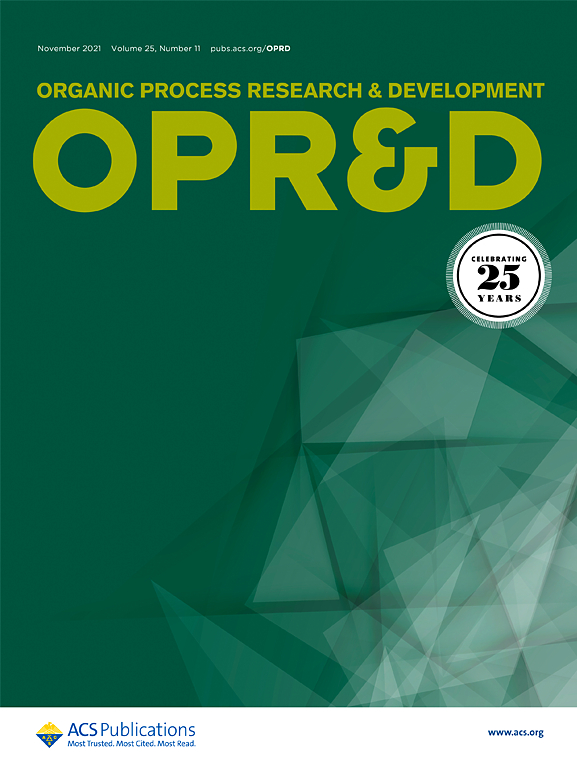Shackles Off: A Kilo Scale Synthesis of Rawal’s Diene
IF 3.1
3区 化学
Q2 CHEMISTRY, APPLIED
引用次数: 0
Abstract
Compared to Danishefsky’s diene, Rawal’s diene suffers from low commercial availability, limited scalability, and obscure stability issues, which strictly limits its usability. Herein, we present an optimized, scalable synthetic protocol that achieves yields suitable for the diene’s semi-industrial production, with adjustments to reagent concentrations, reaction conditions, and isolation procedures to enhance efficiency. Complementing synthetic advancements, this work explores the diene’s physicochemical stability under diverse storage conditions. Rigorous quality control methodologies exploiting nuclear magnetic resonance (NMR) and infrared (IR) spectroscopy facilitate precise monitoring of purity and degradation pathways, establishing robust analytical standards. Additionally, the work demonstrates the utility and advantages of Rawal’s diene in multigram syntheses of 2-alkyl-2,3-dihydro-4H-pyran-4-ones, showcasing its applicability for medicinal chemistry purposes. The findings disclosed in the paper establish a foundation for the broader adoption and commercialization of Rawal’s diene, enabling its integration into academic and industrial workflows.

求助全文
约1分钟内获得全文
求助全文
来源期刊
CiteScore
6.90
自引率
14.70%
发文量
251
审稿时长
2 months
期刊介绍:
The journal Organic Process Research & Development serves as a communication tool between industrial chemists and chemists working in universities and research institutes. As such, it reports original work from the broad field of industrial process chemistry but also presents academic results that are relevant, or potentially relevant, to industrial applications. Process chemistry is the science that enables the safe, environmentally benign and ultimately economical manufacturing of organic compounds that are required in larger amounts to help address the needs of society. Consequently, the Journal encompasses every aspect of organic chemistry, including all aspects of catalysis, synthetic methodology development and synthetic strategy exploration, but also includes aspects from analytical and solid-state chemistry and chemical engineering, such as work-up tools,process safety, or flow-chemistry. The goal of development and optimization of chemical reactions and processes is their transfer to a larger scale; original work describing such studies and the actual implementation on scale is highly relevant to the journal. However, studies on new developments from either industry, research institutes or academia that have not yet been demonstrated on scale, but where an industrial utility can be expected and where the study has addressed important prerequisites for a scale-up and has given confidence into the reliability and practicality of the chemistry, also serve the mission of OPR&D as a communication tool between the different contributors to the field.

 求助内容:
求助内容: 应助结果提醒方式:
应助结果提醒方式:


